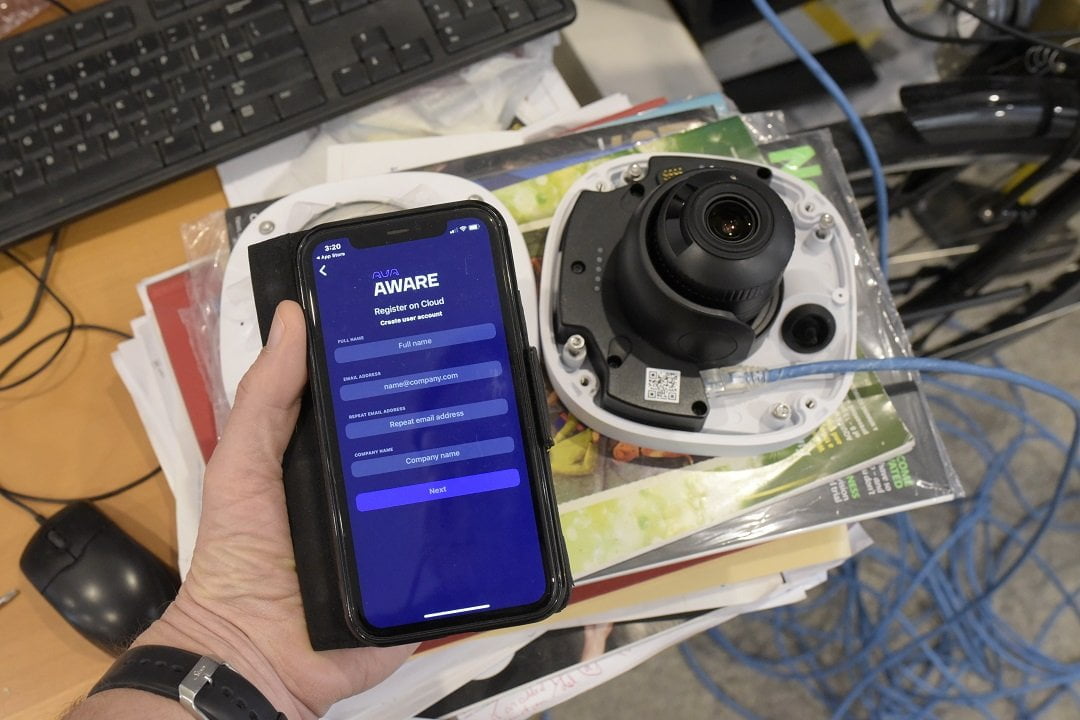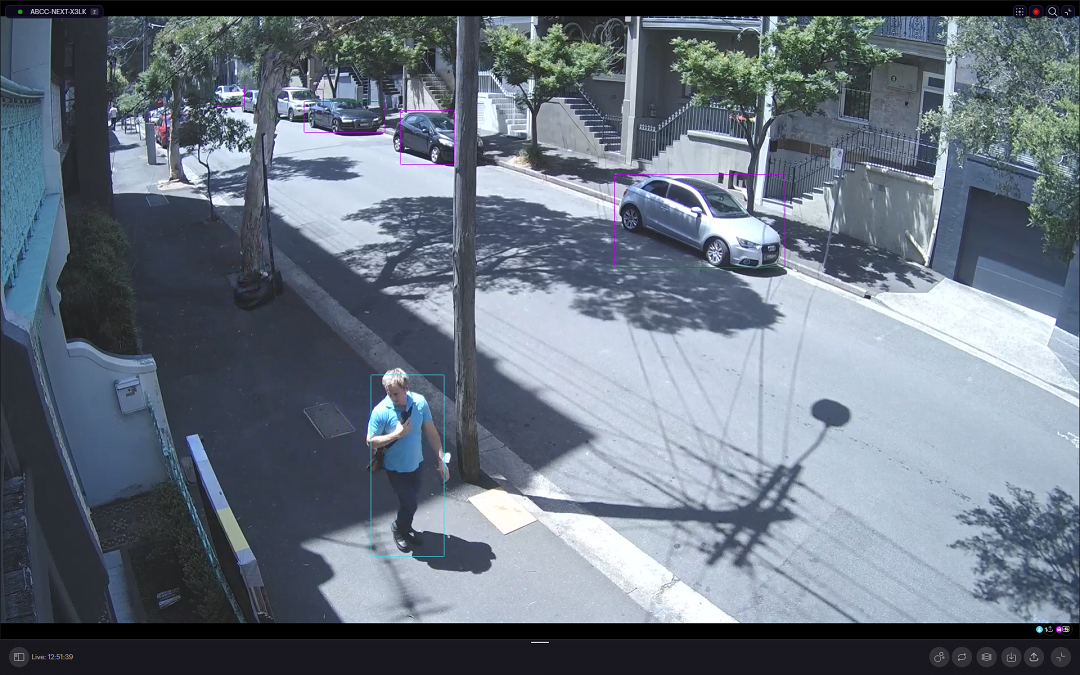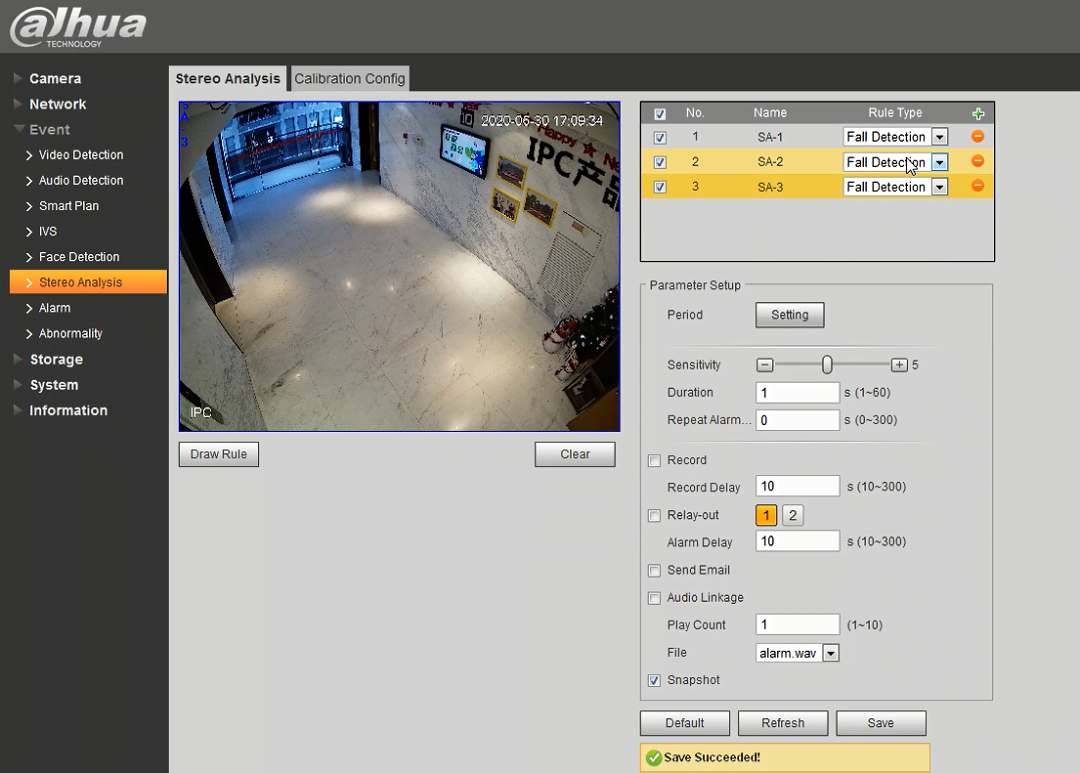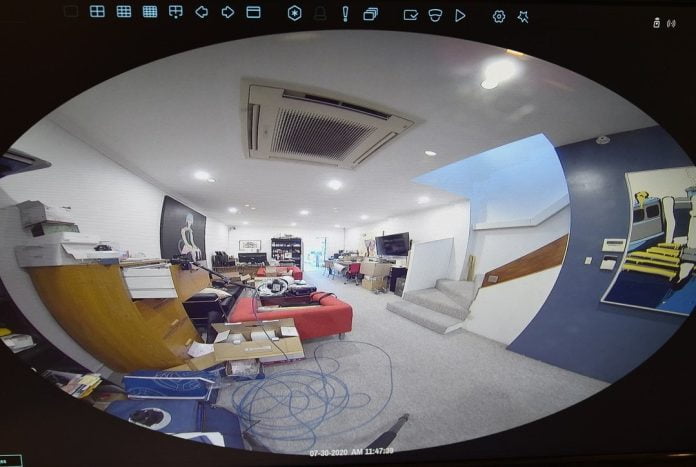In 2021, affordable surveillance solutions are nothing like they used to be, with more power and capability than users could have imagined a few years ago. But with these new capabilities have come new challenges and new business models.
Affordable surveillance solutions used to revolve around DVRs and NVRs, solutions which still have their place, but are more than ever being challenged by cloud and edge-based networked systems, that are not only easy to use but extraordinarily easy to install.
SEN’s recent experience with Ava Security’s 4K dome was a case in point – you scan a QR code, follow an email link to register, and away you go. A key development, when it comes to affordable surveillance systems, is the ongoing improvement in cloud-based image quality but it’s the functionality, ease of use and ease of installation that really ticks the boxes with cloud.
Have the fundamentals of video surveillance changed? No – for end users there’s still the demand for CCTV as a deterrent and an investigative tool in the event of a security or health and safety incident – this applies as much to smaller businesses as it does to larger ones. End users are looking for fast search and review, ease of operation, good low light performance and increasingly, video analytics across a range of operational parameters, including event detection and automated identification and alerts.
For installers and integrators, sales hooks that appeal to SME users are vital, along with cost and ease of installation. New business models also play into the discussion, with some cloud solutions generating installers RMR. Given there are more low-cost CCTV possibilities than ever before – cameras at the edge managed in the cloud, cameras connected to NVRs/DVRs, affordable VMS solutions run on dedicated or shared servers – what’s best, or do all have their place?
According to Nick Maxwell of Ava Security, all the different CCTV technologies have their place.
“Having said that, the flexibility and ease of the cloud cannot be overlooked,” he says. “A cloud system can accommodate deployments large and small, while also providing the possibility to integrate with other systems and give more than just a traditional stagnant video feed. Access to video footage and events is simple with an internet connection. CCTV no longer has to be a large and bulky investment, it’s attainable for anyone wishing to protect their business and assets.”
At a time of technological change, prioritising functionality is even more vital, and Maxwell says there are a number of key qualities that installers and integrators should be looking for when they start picking over affordable CCTV options.
“Flexibility is crucial, not just in terms of adapting to an installer’s specific needs, but also in the ability to adapt to changes in the configuration of security systems over time, for instance, the addition of new cameras, or changes to physical infrastructure,” he explains. “You want a security system that will both stand the test of time, but also be able to incorporate innovation throughout its lifetime.”

Image quality is a consideration for all video surveillance solutions, especially those hoping to meet the higher end of the DORI spectrum – recognition and identification. Something the latest professional grade cameras do very well is deliver outstanding quality – even at the affordable end of the market.
According to Maxwell, CCTV technology is always improving in quality, and as that quality improves, cheaper options also improve, too.
“We are starting to see more affordable options on the market of a decent quality, however, it is difficult to look past the exponential value a powerful VMS system can provide to those cameras,” he says.
What are the most important qualities of a surveillance solution from the point of view of the SME end user, in Maxwell’s opinion?
“An SME must first look at their top needs,” he explains. “Is it to record incidents in case of forensic investigation? Is it to gather intel from CCTV cameras? Once this has been established, the SME should then balance this need against cost – depending on the nature of the business, surveillance can be critical to business functions, whereas with others it can be merely an added layer of security.
“When it comes to calculating the ROI of a security solution, direct value typically includes reduced loss from criminal activity such as theft, vandalism, or fraud, as well as the reduced cost to operators and increased staff efficiency.”
A key development in the affordable end of the market is video analytics, which have now penetrated all the way into NVRs, as well as into cloud-based CCTV solutions are offering clever stuff like LPR. How important are these smarts for SMEs with modest levels of staffing, according to Maxwell?
“The smaller the staff, the more important it is to have analytics that do more for your organization to make up for the missing workforce,” he says. “In addition, with hybrid workforces becoming the norm, it is essential that SMEs can maintain the security of physical assets when employees are not in the office.
“When it comes to selecting analytics, it’s important that all the analytics speak to one another with some of the more valuable video analytics coming from sensors and access control systems that give additional insight into business operations and security.”
When it comes to integrating affordable CCTV with typical alarm/access control solutions in the SME market, Maxwell says that the most important qualities from an integrator’s point of view depend on the use case.
“For a business wanting to integrate alarms or access control systems, they should consider that the better the system, the more they will get out of their other integrations,” he explains. “A higher quality image would be better suited to detect an anomaly rather than a lower quality image that could give a false positive alarm, or not pick up on an unusual event at all. Integrating these solutions is intended to make each more powerful, but a certain level of quality is needed to create a mutually beneficial integration.”

Ava camera performance is solid in a range of internal and external applications…
When it comes to pitfalls, Maxwell says installers and integrators need to consider how non-cloud solutions will have significant limitations.
“First and foremost, storing files on remote servers will require the allocation of storage capacity, as well as presenting the risk that if physical storage devices malfunction, files can be lost permanently or at least be difficult to retrieve,” he explains.
“Installers also need to avoid services which are rigid and unable to integrate effectively – one of the main barriers to improving security posture is the need to ‘rip and replace’ which can be costly and time consuming. There are platforms which will integrate in any pre-existing security system, and these allow the security posture to change with the business.”
Something end users and installers wonder about is the comparative performance of NVRs/DVRs vs cloud solutions – Maxwell argues that taken as a whole, cloud trumps appliance-based technologies.
“Cloud solutions are not only comparable, they will soon outrank on-prem solutions,” he says. “A cloud solution provides more flexibility for users to create a deployment unique to them and their business. SMEs need to consider costs versus performance; a cloud deployment is able to provide that while also allowing for the possibility of growth and future integrations.”
What are the cool new features installers should be looking forward to offering their customers in the SME segment in the coming years?
“Advanced analytics will change the way we use CCTV – and change surveillance as a whole,” says Maxwell. “The industry philosophy was at one time that we need to record everything, but in reality, this creates additional work when trying to identify security breaches or anomalous activity.
“Installers will increasingly offer ‘smart’ cameras, trained using AI to pre-emptively identify suspicious activity, flag it to security teams/management and reduce the need to maintain surveillance at all times. Instead, they will know what to look for, be alert to it, and resolve security risks in a much more effective and timely manner.”
Dahua’s Terry Girgis says there is definitely a place for every sort of CCTV system, and he points out that there is not really a one-size-fits-all solution.
“Installers should look at each scenario on a case-by-case basis as they would with higher end systems,” Girgis says. “It’s fair to say that while VMS-managed solutions with dedicated servers are best for larger systems, they are at the higher end of the cost range and generally require a higher level of IT knowledge.
“For SME applications, an NVR/DVR will more than satisfy the customer’s needs. NVRs and DVRs are constantly evolving with bigger and better processors, and more AI capabilities, especially when married with the AI-on-edge devices that enable processing loads to be shared. For these reasons, in most smaller installations we believe the NVR/DVR to be the best fit for smaller users looking for affordable solutions.”
What are the key qualities installers and integrators should be looking for when they start picking over affordable CCTV options, according to Girgis?
“We are lucky enough to be spoilt for choice, however, this can also make it more difficult, so sticking with the major brands as you always have a comeback if it doesn’t perform as stated would be the recommendation,” he says.
“Most of the major manufacturers have affordable products, as well as higher end products. Furthermore, the top manufacturers also have re-branded products in the market and these rebranded versions are generally just as high in quality, just a couple of models behind our latest technologies. This makes them a good bet if you want something affordable that’s also of high quality, rather than purchasing one of the hundreds of no-name brands out there.
“Definitely avoid any grey market products – these are branded products that are purchased overseas outside of the manufacturer’s local distribution networks. They won’t be covered under local warranty. Most manufacturers are working hard to eliminate the grey market practise, but it is very hard to police. The rule of thumb; “if it seems too good to be true, it usually is”.

According to Girgis, the most important qualities of a surveillance solution from the point of view of the SME end user relate to the fundamentals of surveillance.
“By fundamentals, we mean that the solution does the job expected of it, such as recording, playing back and downloading important incidents when required,” Girgis says. “Ease of use is paramount, as not all operators have IT degrees, but it is always important that they can perform the required tasks as quickly and efficiently as possible.”
Girgis argues that analytics – these include people or vehicle detection and may include LPR – are the future of CCTV.
“Analytics are on the verge of taking over the video surveillance market, meaning exciting times for our industry – at least for the tech heads among us,” he says.
“LPR is at the lower end of the usage scale for SMEs, however, the use of tripwires and intrusion zones where the analytics can distinguish between human and vehicle not only reduces false alarms but makes finding an incident so much easier. Given this, we would say video analytics are very important, especially as they reduce the amount of time staff must spend dealing with incidents.”
What would Girgis argue are the must-have video analytics for smaller businesses?
“Just the basics is enough for most small businesses, but the ability to distinguish between an actual incident and a tree blowing in the wind is very important, especially now with smart phone app notifications being an expectation,” he explains. “That makes the distinction between a real threat and a false alarm increasingly important.”
When it comes to integrating affordable CCTV with typical alarm/access control solutions in the SME market, there are a number of important qualities from an integrator’s point of view, according to Girgis.
“There are obviously limitations when we talk about ‘affordable CCTV’, especially in terms of integration,” he says. “Dahua has excellent integration between our own products and our integration partner products, however, all of our products may not be the best fit for the solution, for instance, it may be better to use a higher-grade alarm that is not integrated with the CCTV rather than using a lesser quality product just because it is integrated.
“Low level integration may be all that is required – we have recently added an optional firmware to out active deterrence range of cameras that arms the camera when the alarm is armed and disarms when it is disarmed, this is achieved merely with a low-level interface but is very effective.”
When it comes to optical performance, Girgis says it would be nice to have a minimum standard, however, in a price-driven market this may not be achievable.
“There are so many capable affordable cameras out there and like anything there are good and bad aspects,” he explains. “Optics are a big part of clean crisp images, however, if buying at the bottom of the spectrum the buyer will obviously need to be aware there will be differences with high end gear.”
Cloud solutions – how comparable are they to local NVR/DVR solutions performance-wise? Do they offer enough performance for almost all typical SME applications?
“Cloud-based is the catch phrase on the tip of everybody’s tongue, but are we ready?” asks Girgis. “In most cases, we would say no, the internet in Australia has by no means the capacity, reliability and speed to be able to transmit large numbers of cameras, in most instances, to cloud-based storage at present.”
According to Girgis, application is the key.
“For a 4-camera home system, cloud storage could be the perfect fit, but for a 16-camera women’s refuge, or for other more critical applications, it’s not the best idea to be storing in the cloud,” Girgis says. “Even with SD card storage installed in edge devices, the reliability and possibility of losing footage due to an SD card failing, compared to the reliability of an NVR with a surveillance hard drive, it is a bit of a no-brainer really. There’s no substitute for direct connection to the storage device.”
Girgis says there are a number of pitfalls installers and integrators need to look out for.
“The biggest pitfall of cloud-based servers is getting a large quantity of data to the servers via the internet and the risk of losing data and therefore footage,” he says. “This may not be a problem for a domestic 4-camera system, however, for a business this could be costly, especially in the case of a liability incident.
“The NVR pitfalls are generally the inability to record and display the number of cameras at the resolutions stated in the documentation, integrators should be cautious of choosing the correct NVR for the purpose. Instead, it’s better to leave some headroom when calculating requirements as often suppliers quote the highest megapixel capability with a low bit rate, however, this may not achieve the required result. The processing power of the NVR also needs to be considered, especially when using AI.”
What’s the future of affordable CCTV systems according to Girgis?
“We can expect more features, more processing power, more analytics at the base level as the higher end capabilities become more mainstream and the technology gets cheaper, more accuracy of analytics with the improvements in deep learning algorithms,” he says.
“We are about to see a major improvement in image quality and lowlight performance with technology improvements in Dahua’s recently released TIOC 2.0 range and the Full colour 2.0 range that utilises dual light fusion to create clear colour images at night even at 4K, which has always been a stumbling block.”
#sen.news












